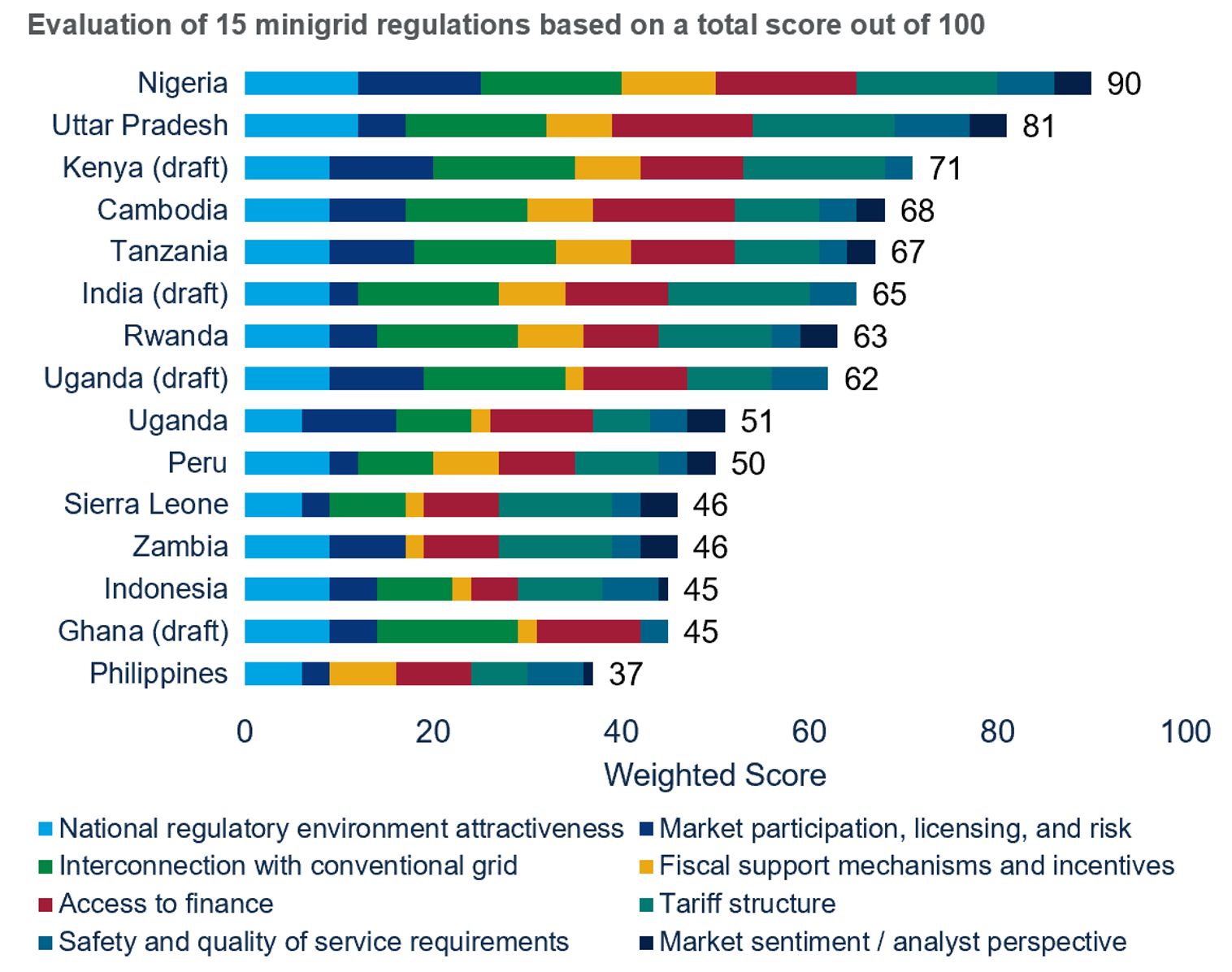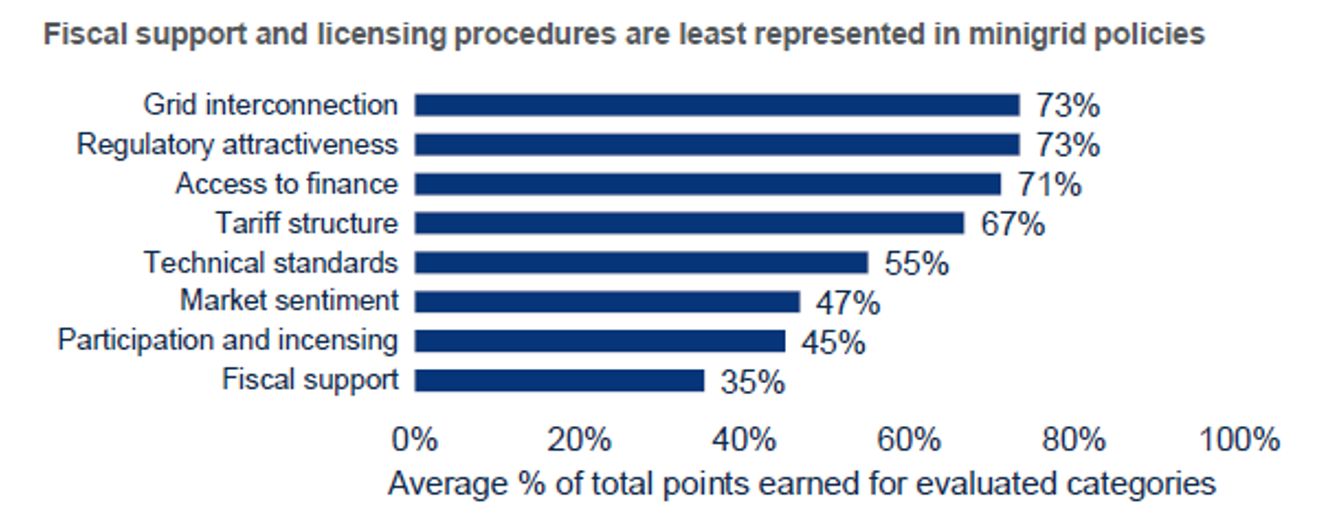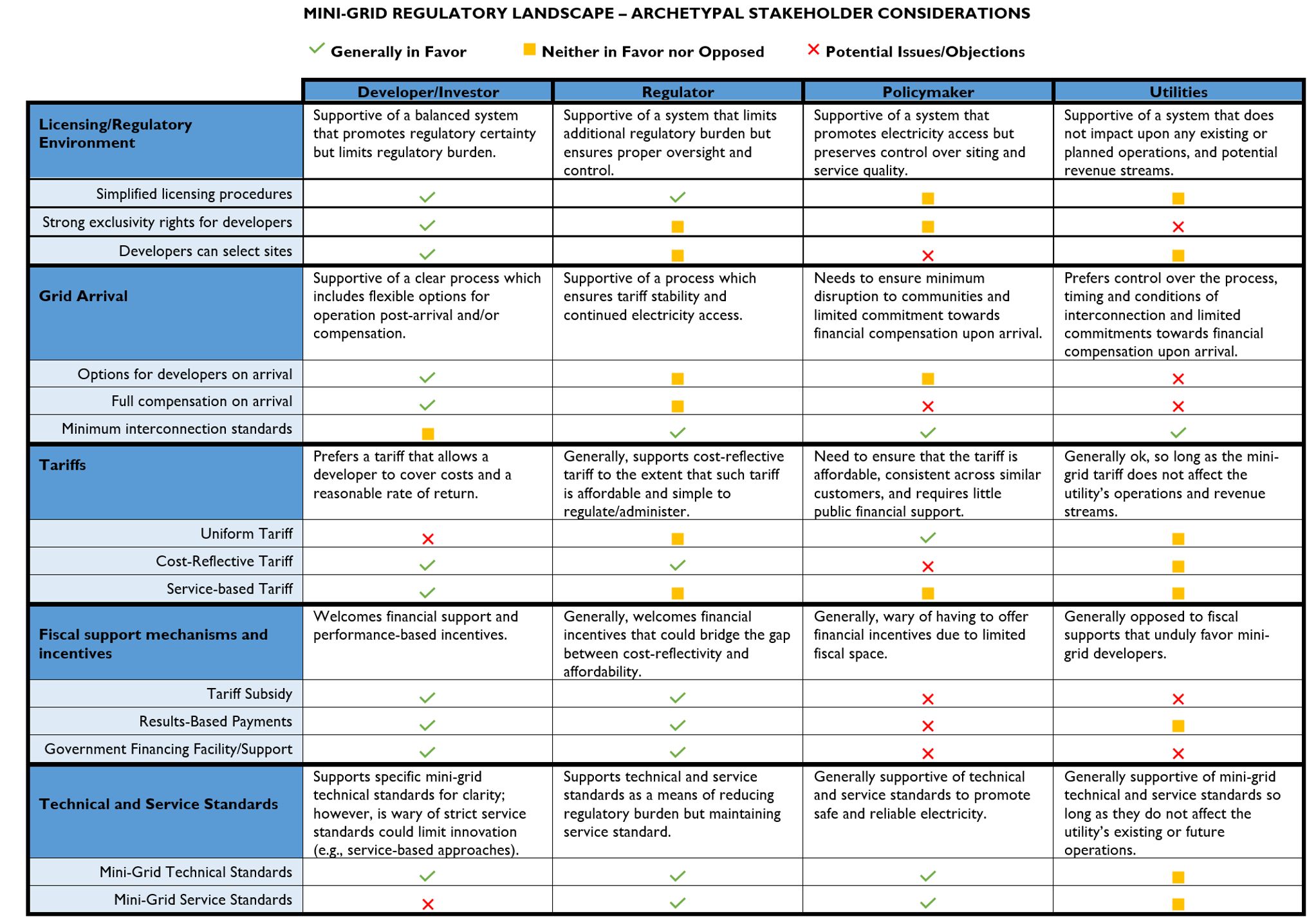The energy access minigrid sector is simultaneously a nascent market and a cleaner reprise of a familiar technology set’s debut role as the original building block of the modern grid, targeted at underserved populations. This duality positions the sector as a fundamental piece of the integrated electrification puzzle.
But despite consistent business-model innovation, steep cost learning rates and a rapidly diversifying competitive landscape, minigrids are still largely stuck in the “missing middle” and have yet to scale on a trajectory reflective of their massive potential. Recent estimates from the Minigrids Partnership suggest that minigrids could serve 111 million households (approximately 550 million to 600 million people) in sub-Saharan Africa, Asia and island nations by 2030, but the World Bank's Energy Sector Management Assistance Program estimates there are currently only about 47 million people connected to minigrids (under a very inclusive definition of minigrid system architectures). The African Minigrid Developers Association reports that its members serve about 250,000 people.
Insufficient policy environments are a well-documented bottleneck to the growth of the minigrid sector. Bad or nonexistent targeted policy shuts out even risk-hungry private investors, sends developers packing to greener pastures or offloads undue risks or costs to customers. For instance, unclear project approval processes have led to situations where more than one developer is given (or believes they have been given) the right to develop the same project site. This resulted in significant confusion and costs to resolve the dispute with the developer eventually exiting the specific market until more certainty and transparency are provided within the project approval process.
Among other hurdles, bad policy has contributed to limiting the volume and usefulness of corporate-level investment disbursed to the sector. While energy access minigrid companies have raised over $500 million cumulatively according to Wood Mackenzie data, minigrids still represent only 20 percent of total capital raised in the energy access sector to date.
Largely missing is the medium-tenor (ideally concessional) debt that rural infrastructure assets require. The sector has, to date, raised over 70 percent of its capital as strategic equity at the corporate level, which has hampered project economics and has required significant creativity to recycle capital back into the project pipeline.
A recent study from Wood Mackenzie evaluated and scored the policy landscape for energy access minigrids globally against a 30-point checklist. Though there are some standouts like Nigeria and the Indian state of Uttar Pradesh, the 15 policies evaluated scored a disappointing average weighted total of only 59/100.

Wood Mackenzie’s research makes it clear that many policies now in force were written with implicit favorability toward the deployment of public or community-owned systems rather than privately owned and operated ones. Even in the cases where regulations have been implemented with the aim of scaling up private participation, most policies do not sufficiently de-risk the project development cycle and the operational phase of the sites to allow mainstream private capital to be comfortable.
While the sector is still too immature to have proven track records of long-term assets in operation or clarity on best practices for policy, we found that currently, the most critical elements of minigrid policies are clear and adaptable licensing processes, transparent and firm measures protecting the rights of developers when the grid arrives, tariff approval processes that allow developers to charge cost-reflective tariffs and the facilitation of fiscal support mechanisms and/or access to finance facilities — at least a few of which have systemic gaps across the global landscape.

Unfortunately, these systemic policy gaps are only part of the picture, and therefore, building an ideal minigrid policy based on best practices, even for a single market, is not a very straightforward task. The diversity and relative immaturity of the market highlight the inconsistent views on best practices for bankable minigrid policies between archetypal developers, investors and public bodies such as regulators and state utilities.
Simply put, many of these stakeholders often do not agree on what they want out of a minigrid policy, may not know what they want out of a minigrid policy, or may outright oppose a minigrid policy, whether by commission or omission. And depending on governance structures, regulatory bodies or utilities may be constrained in their ability to iterate improvements to policy in alignment with private developers.
Our conversations with these private minigrid developers reveal at least high-level consensus on policy design elements, as well as disparities in how their relationships with state-owned utilities are viewed, with some looking to outcompete those entities for customers and quality of service while others present as partners, particularly where regulatory resistance to private minigrids exists.
As a result, the question of what constitutes best practice in minigrid policy doesn’t yet have a very straightforward answer. It is worth recognizing some very commendable recent and ongoing efforts to develop template policies and inform regulators with data (such as the State of the Minigrids Market Report, the African Minigrid Developers Association Benchmarking report, the Minigrid Policy Toolkit 2.0, and the Energy Sector Management Assistance Program Minigrid facility report, among others), but we believe the sector is currently constrained by a misalignment of stakeholder incentives.
In collaboration with our friends at Cadmus Group, we sought to lay out the overlapping and conflicting incentives for archetypal developers, regulators, policymakers and utilities and offer some guidance on how to get this right by getting everybody on the same page.

As with any nascent industry, there are divergent views about the allocation of risk through and the mechanisms for procurement in current regulatory frameworks for minigrids. Most stakeholders generally agree on the need to develop some form of simplified licensing process for minigrids, as well as technical and service standards.
But when it comes to tariffs, grid arrival and fiscal supports, it can often feel like everyone is reading from a different sheet of music.
Much of this tension can stem from governments with little fiscal capacity to offer financial support, utilities that are highly sensitive to any impact on their revenue streams, and persistently high costs of doing business in many emerging markets. However, these tensions also represent opportunities for greater collaboration and tradeoffs. For instance, in the case of grid arrival, some developers are wary of stringent interconnection standards as they increase project risk and cost. These developers may be willing to make the investments if policymakers and utilities could offer reasonable compensation.
These policy challenges the minigrid sector faces are not new; most new sectors of regulated industries struggle to establish transparent, long-term policy that minimizes soft costs and allows investors to earn their required returns. In its early years, the solar industry faced similar problems and achieved scale and maturity through supportive policy and declining costs. But there are some unique challenges to the minigrid sector that are important considerations in policymaking, including the integration of several technologies including costly batteries that make harmonized tariffs unbankable, significant demand stimulation and demand-side management challenges, and promising but nascent add-on productive use business models.
These also are not unsolvable problems, but they do require collaborative and iterative policymaking and a mutual understanding of the interests of each party, which will help establish best practices over time and help move minigrids into the mainstream.
***
For more, get Wood Mackenzie's latest report, Evaluating Minigrid Policies for Rural Electrification: Scoring Regulatory Risks as a Precondition to Investment.




